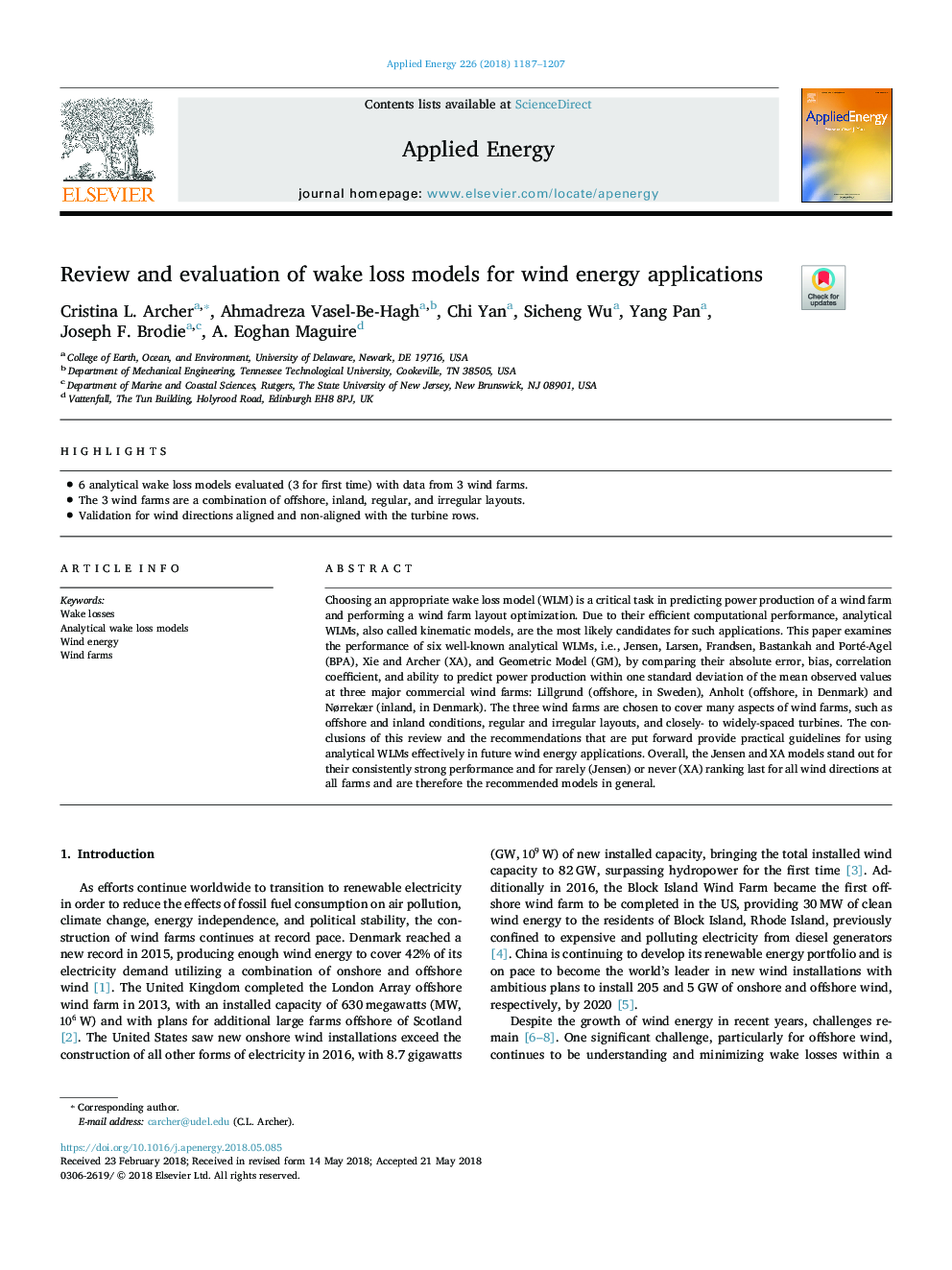| Article ID | Journal | Published Year | Pages | File Type |
|---|---|---|---|---|
| 6679835 | Applied Energy | 2018 | 21 Pages |
Abstract
Choosing an appropriate wake loss model (WLM) is a critical task in predicting power production of a wind farm and performing a wind farm layout optimization. Due to their efficient computational performance, analytical WLMs, also called kinematic models, are the most likely candidates for such applications. This paper examines the performance of six well-known analytical WLMs, i.e., Jensen, Larsen, Frandsen, Bastankah and Porté-Agel (BPA), Xie and Archer (XA), and Geometric Model (GM), by comparing their absolute error, bias, correlation coefficient, and ability to predict power production within one standard deviation of the mean observed values at three major commercial wind farms: Lillgrund (offshore, in Sweden), Anholt (offshore, in Denmark) and Nørrekær (inland, in Denmark). The three wind farms are chosen to cover many aspects of wind farms, such as offshore and inland conditions, regular and irregular layouts, and closely- to widely-spaced turbines. The conclusions of this review and the recommendations that are put forward provide practical guidelines for using analytical WLMs effectively in future wind energy applications. Overall, the Jensen and XA models stand out for their consistently strong performance and for rarely (Jensen) or never (XA) ranking last for all wind directions at all farms and are therefore the recommended models in general.
Keywords
Related Topics
Physical Sciences and Engineering
Energy
Energy Engineering and Power Technology
Authors
Cristina L. Archer, Ahmadreza Vasel-Be-Hagh, Chi Yan, Sicheng Wu, Yang Pan, Joseph F. Brodie, A. Eoghan Maguire,
